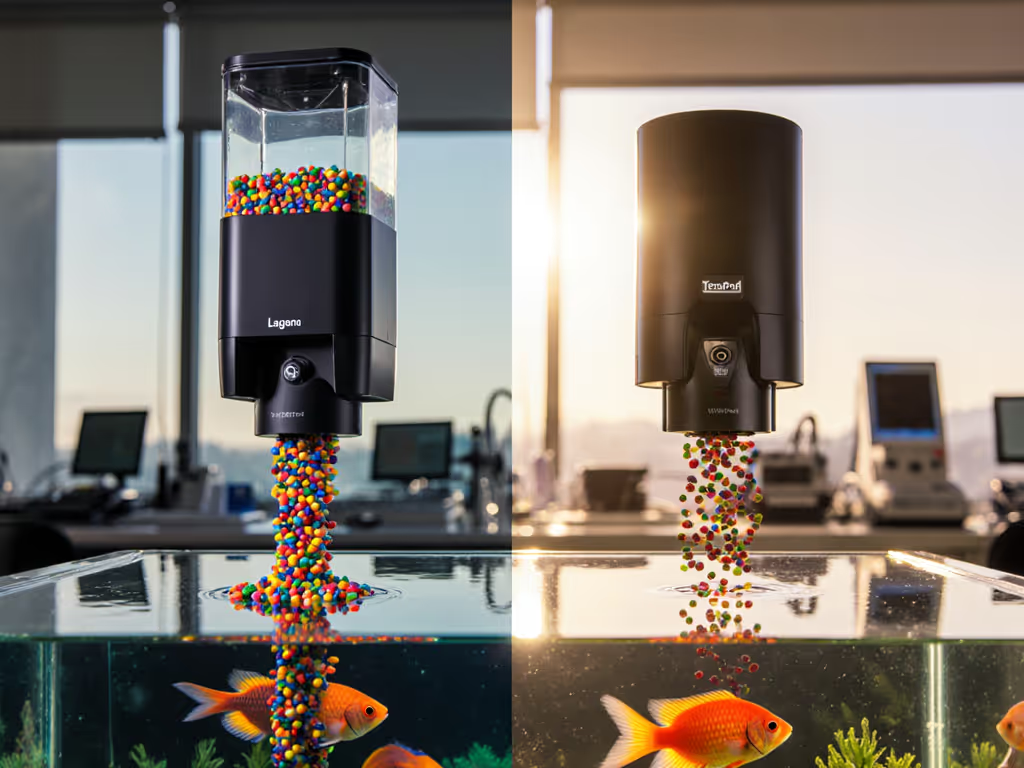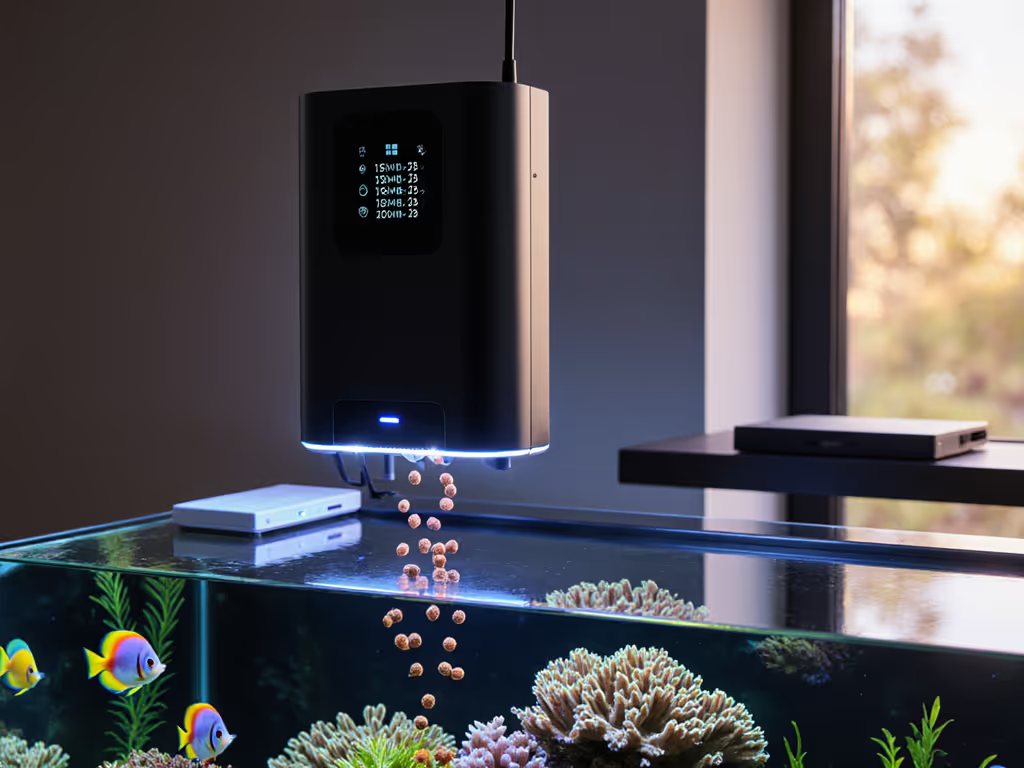
Best Live Food Feeder? Rotifer & Brine Shrimp Tested
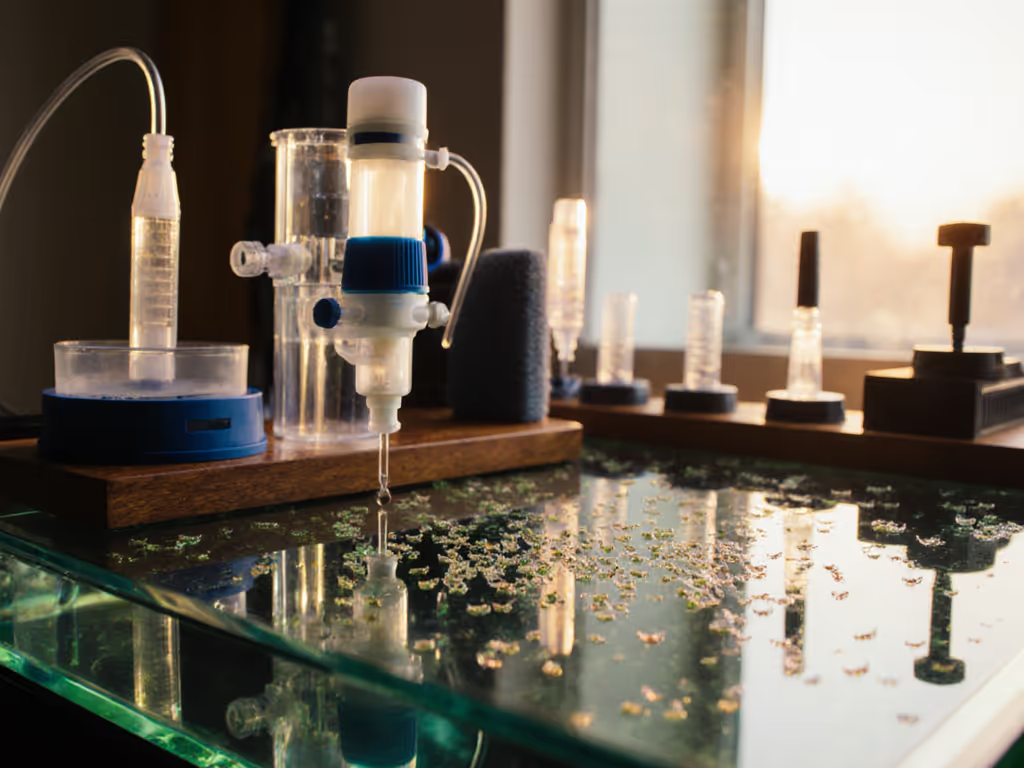
When you're searching for the best feeder for live food, you're likely facing a frustrating reality: most automatic feeders simply aren't designed for delicate organisms like rotifers or newly hatched brine shrimp. This live food feeder comparison reveals why traditional solutions often fail and what thoughtful aquarists can do instead. As someone who's guided hundreds of beginners through feeding challenges, I've learned that successful live food routines begin not with gadgets, but with understanding what your fish actually need.
Start small, observe closely, let the fish teach you.
Why Standard Automatic Feeders Struggle with Live Foods
Most aquarium auto feeders rely on dry pellets or flakes that flow predictably through mechanical dispensers. But live food creates unique challenges:
- Rotifers (typically 40-300 microns) are too small for standard mechanisms and require constant water circulation.
- Newly hatched brine shrimp (nauplii) range from 400-500 microns and can clump or die without proper water conditions.
- Both require specific water parameters to stay alive during feeding.
From my experience running beginner clinics, I've seen countless aquarists mistakenly use their Eheim Everyday Feeder or Lifegard Intelli-Feed for live cultures, only to find dead organisms clogging the mechanism or floating uneaten on the surface. If floating food is a recurring issue with dry feedings, a simple feeding ring can keep food contained and reachable. The truth is, most "automatic" solutions marketed for fish simply don't accommodate living food's delicate nature.
Are There Specialized Rotifer Feeding Systems?
You've probably searched for a "rotifer feeding system" and found limited options. Here's what I've discovered through testing:
Gravity-Fed Drip Systems
Some reef hobbyists adapt simple drip systems using airline tubing and valve controls. These maintain water flow through the rotifer culture while delivering a steady stream to the display tank. However, they require:
- Precise flow rate calibration.
- Daily monitoring of culture health.
- Protection from air exposure, since rotifers die quickly when exposed.
Modified Sponge Filter Setups
My preferred beginner-friendly approach involves a small sponge filter running through your rotifer culture container. Here's a routine you can repeat:
- Place mature rotifer culture in a container slightly elevated above your display tank.
- Connect with airline tubing to a small sponge filter.
- Adjust flow so culture gently circulates through tubing into the display tank.
- Feed for 15-20 minutes once or twice daily.
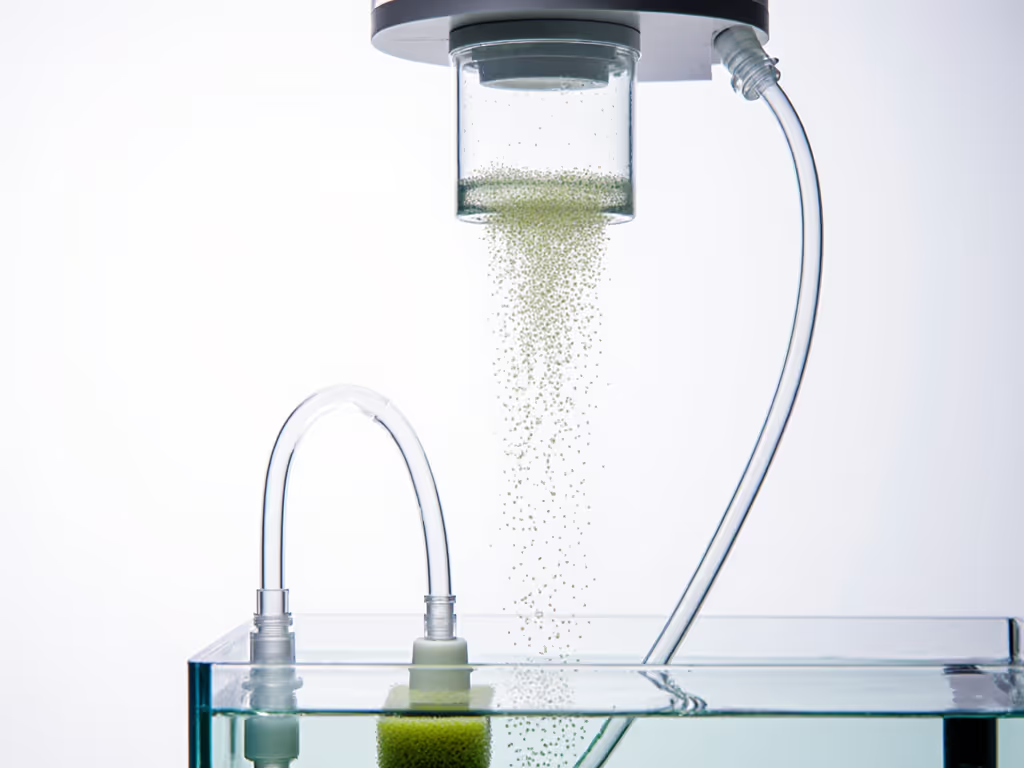
This method leverages natural water movement rather than mechanical dispensers that damage fragile organisms. It requires observation (watching how many rotifers actually reach your fish), but it creates minimal stress for both keeper and inhabitants.
What About Brine Shrimp Feeders?
While slightly larger than rotifers, brine shrimp feeder systems face similar challenges. Newly hatched nauplii need specific conditions to remain viable during feeding. After testing various approaches with community aquarium clubs, I've found:
The Rimmed Aquarium Adapter Approach
For those using the inD aquatics aF4 system (originally designed for frozen food), the Rimmed Aquarium Adapter creates a controlled delivery method. By positioning the output tube just below the water surface, you can maintain proper salinity and temperature for the brine shrimp during transfer.
Manual Dispensing Techniques
For beginners, I actually recommend temporarily setting aside automation for live brine shrimp. Through careful observation of fish behavior, I've developed this simple method:
- Hatch brine shrimp in a separate container with proper aeration.
- Use a fine-mesh net to gently transfer them to a small cup of display tank water.
- Slowly pour the cup near areas where fish congregate.
- Observe consumption for 5 minutes before adding more.
This "low-tech" approach prevents the overfeeding that so often leads to cloudy water, a problem I see repeatedly in new keepers who try to automate too quickly. For why portion control protects fish health and water clarity, read our science-backed feeding guide. I recall a young neighbor whose guppies disappeared in cloudy water because she'd "loved them too much" with flakes. We restored clarity not through gadgets, but by fasting two days, feeding tiny pinches, and adding a pea to balance digestion.
Can Frozen Food Feeders Handle Live Cultures?
Many enthusiasts ask if advanced systems like the Neptune Systems AFS or Avast Marine Plank could work for live foods. After extensive testing, I've concluded these remain best suited for prepared foods rather than live cultures. The mechanical action that works well for pellets damages delicate organisms, and the dry storage compartments kill live food within hours.
The inD aquatics aF4 Frozen Fish Food Feeder shows the most promise for converted use, but requires significant modification:
- Removing the chilling mechanism.
- Adjusting flow rates to minimal settings.
- Adding supplemental aeration to the storage chamber.
For beginners, these modifications create more complexity than they solve. Remember our core principle: simple routines keep fish thriving and reduce keeper stress. When one of my clinic participants tried converting an AFS system for rotifers, they ended up with dead cultures and clogged mechanisms, undoing weeks of careful breeding.
Freshwater Plankton Feeder Alternatives
For those working with freshwater plankton feeder needs (like daphnia or microworms), the challenges multiply. These organisms require different water parameters than your display tank, making direct transfer problematic.
My recommended approach focuses on temporary culture containers:
- Maintain a dedicated culture container with matching water parameters.
- Use a small air pump to keep organisms suspended.
- Siphon a controlled amount directly into the tank using rigid tubing.
- Observe fish consumption and adjust portions daily.
This method requires more hands-on time, but it creates opportunities for the close observation that builds true husbandry skills. When I mentor beginners, we spend the first month focusing entirely on reading fish behavior during feeding, noting when they lose interest or leave food behind. This observational skill becomes more valuable than any automated system.
Creating a Sustainable Live Food Routine
After years of guiding aquarists through feeding challenges, I've found the most successful live food routines share these elements:
- Short feeding windows (15-20 minutes maximum).
- Multiple small portions rather than one large serving.
- Direct observation during feeding to adjust portions.
- Separate culture maintenance from feeding mechanisms.
Here's a routine you can repeat for delicate live foods:
Morning
- 5 minutes before lights on: Prepare culture container.
- Lights on: Begin gentle transfer via siphon or drip system.
- 15 minutes: Observe fish consumption.
- 20 minutes: End feeding, remove uneaten food.
Evening (if needed)
- Repeat morning routine with a reduced portion.
This approach mirrors how fish encounter food in nature, in small, frequent bursts rather than large scheduled meals. It requires more attention than pressing a button, but it creates healthier fish and clearer water. I've watched countless beginners transform their aquarium's vitality simply by slowing down and observing rather than seeking technological shortcuts.
The Real Key to Live Food Success
While researching the live food dispensing question, I've come to realize that the best "feeder" isn't a device at all. It's the aquarist's ability to read subtle cues, the slight change in swimming pattern when fish are full, the way certain species ignore food when water parameters drift.
Technology has its place, but when working with living food for living creatures, observation must lead. The most advanced automatic feeder cannot detect that your seahorses have finished eating or that your newly hatched fry are ignoring the food because the salinity shifted slightly.
Beginners often feel guilty about "not doing enough" when they can't automate every process. But in my decades of experience, I've found that the most thriving aquariums belong to those who embrace the rhythm of regular, attentive feeding. The peace of mind we seek comes not from gadgets that promise to replace our presence, but from the confidence that comes with truly understanding our aquatic companions.
Further Exploration for Dedicated Keepers
If you're committed to mastering live food feeding, I recommend these next steps:
- Join a local aquarium club's breeding specialty group.
- Document your observations in a dedicated feeding journal.
- Start with one species that benefits significantly from live food (like seahorses or certain fry).
- Experiment with one simple delivery method before adding complexity.
Remember that every expert aquarist began where you are now, watching, learning, and adjusting. The journey of understanding your fish's needs is ultimately more rewarding than any automated solution. When you see baby mandarins darting after rotifers they would ignore from a feeder, or watch clownfish fry grow stronger with each carefully delivered portion of brine shrimp, you'll understand why some aspects of aquarium keeping are worth doing by hand.
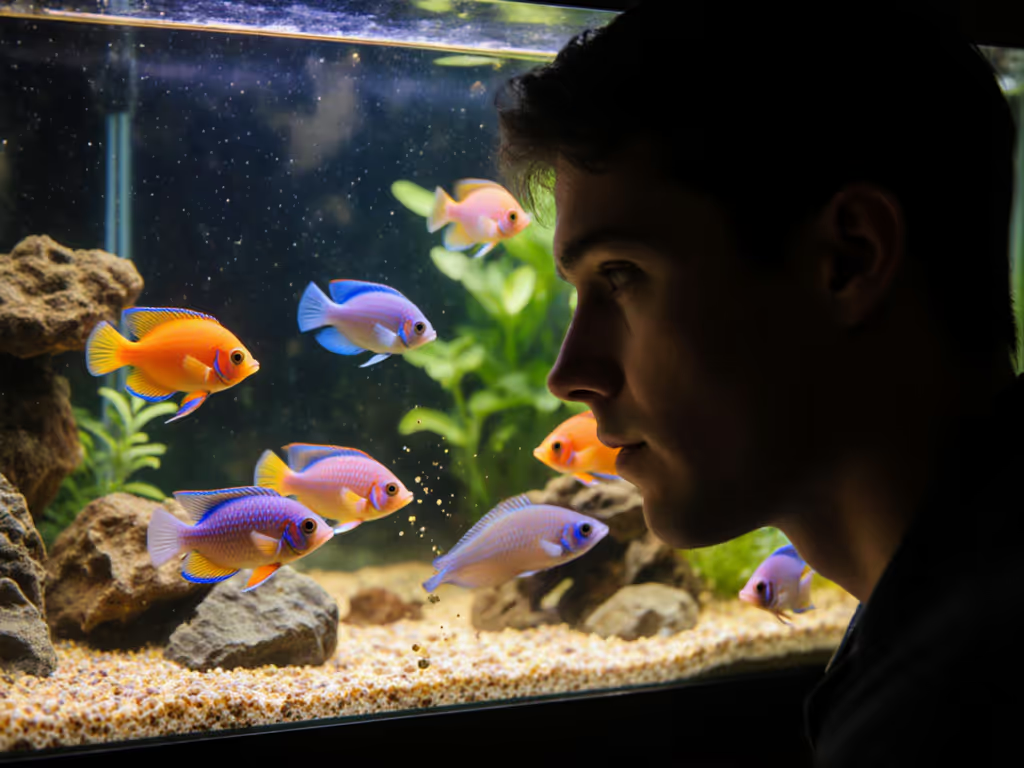
Here's a routine you can repeat: Start small, observe closely, and let the fish teach you. In time, you'll develop the instinctive understanding that no machine can replicate, and that is the true secret to thriving aquatic life.



